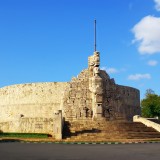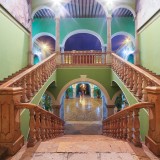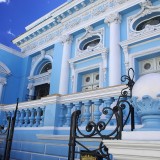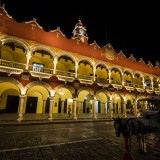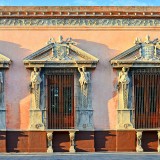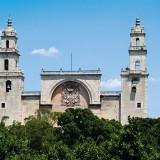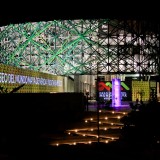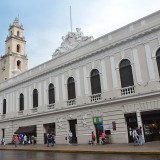loading
Villa Beatriz
Built by the Portuondo Regil family during the sisal peak era, its magnificent patios are now a perfect venue for many social and artistic events.
Santa Ana Parish
Its construction started in 1729 and ended in 1733. Its sober façade was originally painted in red.
Canton Palace
Built at the beginning of the 20th century, it was declared the official residence of the state governors in 1948. In 1966, the State Governement, together with the INAH, turned it into the Regional Museum of Anthropology, where one can admire the rich heritage of the Yucatec maya culture.
Nahualli
Located in the Santa Ana district, it has been restored by a couple of artists, Abel Vázquez and Melva Mediana, to create an innovating mix of workshop, home, gallery and studio.
Monument to Justo Sierra O’Reilly
This monument was erected in 1906 as a tribute to Justo Sierra O´Reilly, a writer, novelist, historian and jurisconsult from Yucatan.
Monument to the Mother Land
The construction of this stone monument started in 1945 and it was inaugurated in 1956. In the middle of the semi-circle one can see a 14-meter high statue of a mestiza.
Monument to Felipe Carrillo Puerto
It was built under José María Iturralde´s government. Felipe Carrillo Puerto was Governor of Yucatan and leader of the Southeastern Socialist Party. He is known for his social and educational work.
El Pinar
This mansion is absolutely magnificent thanks to its huge gardens and excellent state of conservation. The mansion belongs to the Porfiriate era and its style is influenced by the French Renaissance.
The Peon de Regil Mansion
It was built in neo-classic style with a carved stone façade. Pedro de Regil, an hacienda owner, ordered its construction. Today, it is used as offices.
Casa Vales
It was built in 1908 under Mr. Fernando Rendón´s orders. During the 1990s, the building was purchased and restored by a financial group.
The Twin Houses
The Cámara Zavala brothers had their houses plans made in France and Manuel Cantón was the engineer in charge of the construction, which started in 1906.
Back to Mérida map
The Minaret House
Built in neo-classic French style, its moorish style minaret stands out from the rest. Nowadays, it houses the offices of a telephone company.
